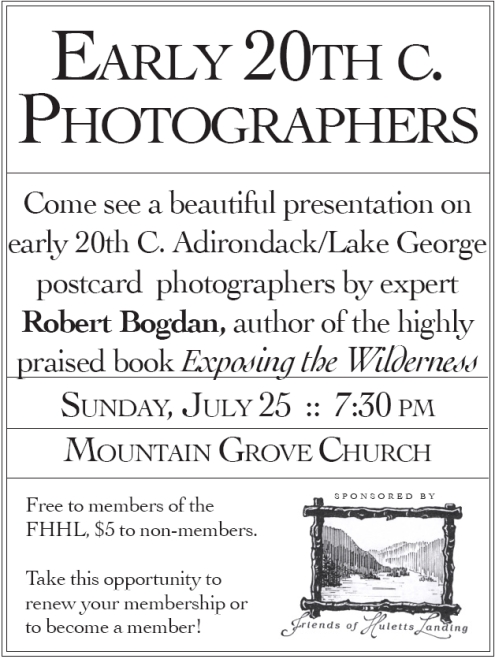
Stunning Video: Last Atlantis Launch
Some great shots from multiple cameras that I’ve never seen before.
httpv://www.youtube.com/watch?v=cKPqomW5kDI
Great Oak Loses Part
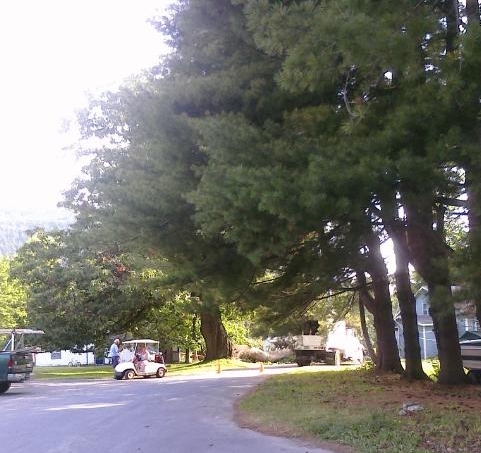
The long-standing red oak tree near the Casino, lost one of its limbs on Thursday, July 15th.
This picture was taken shortly after the large oak tree next to the Casino lost one of its limbs on Thursday. After it was cut up, I attempted to count the rings to see how old it was. Because of the way it was cut, I had to count 1/2 way up the limb. I counted 115 rings, so the limb would be approximately that old.
I would guess the tree itself is about 250-300 years old.
Cell Phone Tower Update
The Federation of Huletts Association at their meeting on July 10, 2010, asked Helenmarie Sunkenberg, to give some information concerning the proposed cell tower.
This is the letter I received from Mrs. Sunkenberg dated July 13, 2010, outlining her thoughts.
A few things to consider:
1.) I am in favor of a cell phone tower. I will be basing my comments on the tax implications, visibility issues and overall coverage area. We have already had an accident nearby this year where it was reported by the Post Star that precious moments were lost calling for assistance on a cell phone. I hope in the event of any life threatening emergency, a cell phone tower will be present to assist any person in such a predicament.
2.) I cannot independently verify all the points Mrs. Sunkenberg raises. This is Mrs. Sunkenberg’s presentation of the issues, there may be other or different interpretations also. My understanding is that any approved cell tower will have “conditions” placed upon its construction by the Adirondack Park Agency. Independent Towers is known for its proficiency in “hiding” its towers.
3.) I also believe that the carrier or company that builds the tower, enters into agreements with other providers to co-locate their receivers on the tower. So from what I understand, one tower will house multiple cell phone providers.
Bits of Everything
Gov’s Wife Gets No-Bid Deal
The NY Post reports on a no-bid deal that involves the Governor’s wife.
NJ Approves Property Tax Cap / When Will NY?
Our neighbor NJ has approved a property tax cap. It begs the question when will NY show some political courage and do the same. The NY Times reports here.
See How Much We Owe
I can’t gauge how authentic this site is but it certainly makes you think. Check out the US Debt Clock to see how much money our government owes.
Babe Ruth Learned It Here
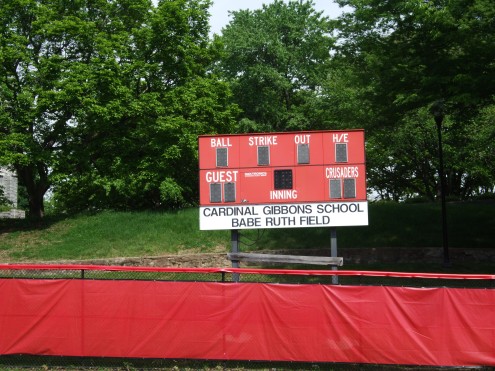
With Major League Baseball’s All-Star game this week, I thought this was an interesting post to run today.
The one name synonymous with baseball is: Babe Ruth.
“The Great Bambino” grew up in Baltimore, Maryland and when I was in Maryland this past year, it was major news when the Catholic Archdiocese of Baltimore announced that they would be closing Cardinal Gibbons High School once the 2010 class graduated in June.
This school has historical significance because it is home to the field where Babe Ruth learned to play baseball.
The Cardinal Gibbons School occupies the campus of the former St. Mary’s Industrial School for Boys in the City of Baltimore which was opened by the Archdiocese in 1866. It closed in June 1950, and the Cardinal Gibbons School opened in 1962.
So, on a weekend this Spring before the school closed, I stopped by and took some pictures. I brought along some historical photographs of Babe Ruth playing there and tried to find the exact locations where they were taken.
The baseball field young Babe Ruth played on while attending St. Mary’s was still in use this past year. It’s said that, “if Yankee Stadium was the house that Ruth built, then St. Mary’s was the house that built Ruth.”
Only two of the buildings present on the campus remain from the days of St. Mary’s: the fine arts building and the main school building which replaced the former school building which was destroyed by fire in April 1919.
Ruth never forgot where he came from and after he joined the New York Yankees in 1920, he took the St. Mary’s band to major league ballparks to raise money to replace the main school building.

I learned that while the baseball field was a bit different then, I could still find some of the exact spots where the “Babe” learned to play the game.
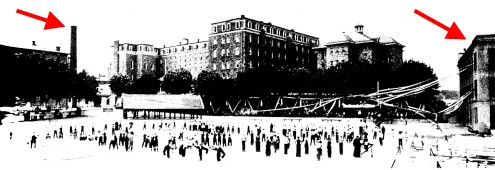
A grainy picture of St. Mary’s Industrial School for Boys as it appeared in roughly 1890. The building in the center burned down in 1919.

The baseball field as it looks today. The smoke-stack is still in its original position and the original fine arts building can still be seen overlooking the baseball field. Centerfield today is where home plate was located when Ruth played here.
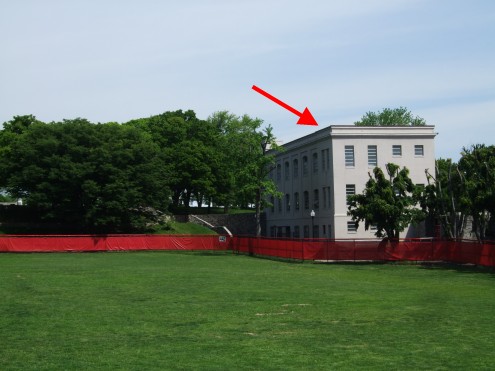

The layout of the field has been reversed over time but nearby buildings, in many cases, are unchanged. The wall behind Ruth (in the picture above) now has a dugout built in front of it.
It certainly was an experience to stand on the same field that Babe Ruth did as a boy. In many ways, it shows how eternal our national pastime is.
At The Casino This Week…

Tuesday is Mexican Menu
Friday is Lobster and Seafood Fest
Saturday is Prime Rib
(reservations appreciated 499-0361)
Happy Hour is from 5 – 7 pm with $1 Coors Light Draft, $3 drink special, and a $5 menu special!!!
This Sunday and Monday the kitchen will be closed, but the bar will be open.
32 Aboard Saturday’s Excursion

While I was unable to attend Saturday’s trip aboard the Lake George Association’s Floating Classroom, there were 32 people on board who learned much about the ecology of Lake George. If you missed the boat (sorry I know it’s a bad pun), don’t worry, the Floating Classroom will be returning to Huletts in August.
Thank you Friends of Historic Huletts for sponsoring this worthwhile event and thank you Lake George Association for providing this valuable resource.
The Autobiography of Mark Twain
Here’s a PBS News Hour segment on the new version of Mark Twain’s autobiography. Twain specified that his entire autobiography could not be published until 100 years after his death. In so far as he died in 1910, this is the year that it will be released.
This is a book that I’m very much looking forward to reading. The segment below is roughly 8 minutes, but it gives a detail account of the autobiography.
httpv://www.youtube.com/watch?v=8wzZhbctI4Q
Invasive Species Awareness Week Begins July 12th

Lake George’s Invasive Species Awareness Week (ISAW) begins next week, and coincides with the release of a new report by the New York State Invasive Species Council. Entitled: A Regulatory System for Non-Native Species, the report has been sent to Governor Patterson and the legislature for review.
Those interested in learning more about invasive species impacting Lake George and efforts currently in place to prevent their spread, or discussing the new regulatory system proposed by the state council, are invited to stop by the ISAW display at the Visitors Center in downtown Lake George, from 11 am – 4 pm, Monday – Friday, July 12 – 16. Representatives from the Lake George Association, the Cornell Cooperative Extension, Warren County Soil and Water Conservation District, and other area organizations will be on hand.
Due to a lack of natural predators, diseases and parasites, invasive species can quickly become pervasive. When they do, these species can negatively impact the ecological balance of Lake George by out-competing native species for light, nutrients, and space.
The new report by the NYS Invasive Species Council introduces a process for assessing level of threat, assessing socioeconomic value, and assigning each invasive species into a distinct category for appropriate action.
State Environmental Conservation Commissioner Pete Grannis said, “New York needs to take action now to curb the many pathways that invasive species use to make their way here. The system the Council is proposing strikes the right balance of minimizing the major threats to our ecology and economy
while allowing for the careful use of those plants and animals that pose lower risks.”
The new assessment process would allow the state to categorize invasive species as “prohibited,” “regulated” or “unregulated.” Species in the “prohibited” category would be the most restricted as they pose clear risks to New York’s economic, ecological and public health interests, and, therefore, would be banned from commerce entirely. “Regulated” species would be restricted, but not prohibited from commerce, and would require practical and meaningful regulatory programs. “Unregulated” species would be identified as those non-native species that do not pose a threat and therefore could be used freely in commerce.
Two “tools” would be used in assessing risks from non-native plants and animals. One evaluates the inherent, biological “invasiveness” of each species, i.e., some species are better “weeds” than others. The other tool looks at socio-economic values to help determine whether the social benefits of a plant or animal outweigh the potential harm. For example, earthworms have often been shown to have positive effects on soil structure and fertility in agricultural and garden ecosystems; however, glacial ice sheets that covered most of New York some 11,000 to 14,000 years ago left New York worm free. Today’s worms are actually European invaders and considered a non-native invasive species, but are clearly valuable.
The New York State Invasive Species Council’s final report is available online at http://www.dec.ny.gov/animals/63402.html.
Gallery 2010 Opening
The Friends of Historic Huletts wants everyone to know that the Gallery 2010 opening will be Saturday, July 10th from 5 -7 pm. Wine & Cheese will be served. Photography by Tom Keating. Good company. Hopefully some time to reflect on the history of Huletts and meet some new members.
Indian Bay Summer

It Was Fun

If you have to leave Huletts on Monday, we hope you had a great time this past weekend and that you’ll come back soon. Here’s a shot to remember the weekend!
Bits of Everything
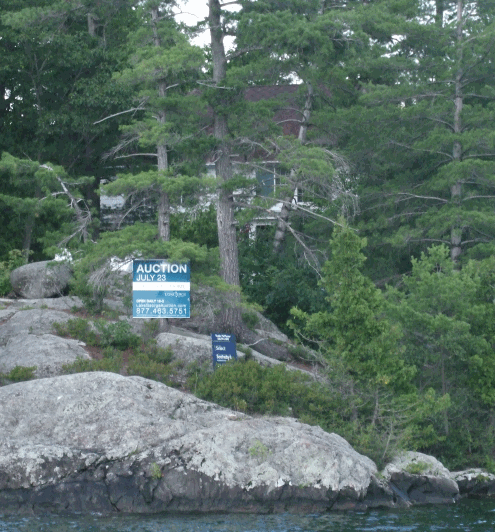
July 23 Auction on Sheep Meadow Lane
Concierge Auctions reports on the live auction to be held on July 23rd.
Drowning Doesn’t Look Like Drowning
gCaptain.com tells us what to watch for if a person is actually drowning.
Bigfoot Spotted? You’ll Know What to Look For
Denton Publications gives some insights into Bigfoot.
Before She Was a Star
Pilot Girl links to a CNBC Video and has a post about Rachel Ray before she became famous.

